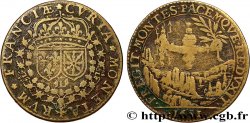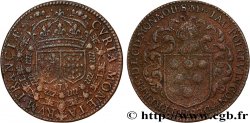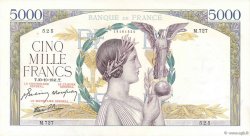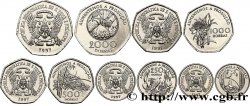E-auction 141-81455 - fjt_299787 - COUR DES MONNAIES DE PARIS Louis XIII 1635
Чтобы принять участие в торгах, вы должны войти в систему и стать подтвержденным участником аукциона. Войдите, чтобы сделать ставку. Ваш аккаунт будет подтвержден в течение 48 часов. Не ждите до закрытия торгов, чтобы зарегистрироваться.Сделав ставку на данный товар, вы вступаете в юридическое соглашение на покупку выбранного товара и нажатием кнопки «Сделать ставку» подтверждаете принятие вами условий интернет-аукционов cgb.fr.
Ставка может бить сделана только в полном эквиваленте евро. Торги закроются согласно времени, указанному в описании товара, все ставки, сделанные после закрытия торгов, учитываться не будут. Не следует откладывать предложение вашей ставки до последнего момента, так как система может не успеть обработать вашу заявку, и ваша ставка не будет принята. Более детальную информацию вы найдёте здесь: FAQ по интернет-аукционам.
БЕСПЛАТНО.
БЕСПЛАТНО.
| Оценить : | 120 € |
| Цена : | 49 € |
| Максимальная предлагаемая цена : | 50 € |
| Конец торгов : | 28 December 2015 19:19:00 |
| Участников : | 9 Участников |
Тип Louis XIII
Дата: 1635
Монетный двор / Город: Nuremberg
Металл: brass
Диаметр: 25,5 mm
Ориентация осей монеты: 11 h.
Вес: 4,12 g.
Век: lisse
Редкость: R2
Ссылки в каталоге: :
Происхождение:
Ce jeton provient de la collection Pierre-Yves Lathoumétie
Лицевая сторона
Аверс: легенда: CVRIA. MONETARVM. FRANCIAE.
Аверс: описание: Écus de France et de Navarre couronnés et entourés des deux colliers des ordres du roi.
Обратная сторона
Реверс: легенда: CAELVM. LILIO. LILIVMQVE. TERRIS ; À L'EXERGUE : 1635.
Реверс: Описание: Un lis surmonté d'une couronne, accosté de six autres couronnes.
Комментарий
Jeton particulièrement énigmatique que nous attribuons à Nuremberg bien qu’il ne soit pas signé et que son style soit excellent. En effet, il est d’un diamètre légèrement réduit, d’un poids léger et surtout d’un axe irrégulier. Si ce n’est Nuremberg, c’est à coup sur un atelier non officiel.
Notons par ailleurs que le revers est copié sur un coin de 1634 (Voir Feuardent 12192 où les couronnes sont bien particulières et différentes de celles du jeton de la Cour des Monnaies de 1609) et que les ateliers de Nuremberg ont souvent plagié des types de la Cour des Monnaies, voir par exemple les jetons d’André Hac.
Bien entendu, une autre raison de penser à un jeton non officiel est qu’il existe, pour l’année 1635, un jeton officiel.
A particularly enigmatic token that we attribute to Nuremberg, although it is not signed and its style is excellent. Indeed, it is slightly reduced in diameter, light in weight, and above all, has an irregular axis. If it is not Nuremberg, it is certainly an unofficial mint. Note also that the reverse is copied from a die from 1634 (See Feuardent 12192 where the crowns are very particular and different from those of the token of the Court of Mints of 1609) and that the Nuremberg mints often plagiarized types from the Court of Mints, see for example the tokens of André Hac. Of course, another reason to think of an unofficial token is that there exists, for the year 1635, an official token
Notons par ailleurs que le revers est copié sur un coin de 1634 (Voir Feuardent 12192 où les couronnes sont bien particulières et différentes de celles du jeton de la Cour des Monnaies de 1609) et que les ateliers de Nuremberg ont souvent plagié des types de la Cour des Monnaies, voir par exemple les jetons d’André Hac.
Bien entendu, une autre raison de penser à un jeton non officiel est qu’il existe, pour l’année 1635, un jeton officiel.
A particularly enigmatic token that we attribute to Nuremberg, although it is not signed and its style is excellent. Indeed, it is slightly reduced in diameter, light in weight, and above all, has an irregular axis. If it is not Nuremberg, it is certainly an unofficial mint. Note also that the reverse is copied from a die from 1634 (See Feuardent 12192 where the crowns are very particular and different from those of the token of the Court of Mints of 1609) and that the Nuremberg mints often plagiarized types from the Court of Mints, see for example the tokens of André Hac. Of course, another reason to think of an unofficial token is that there exists, for the year 1635, an official token








 Cообщить об ошибке
Cообщить об ошибке Распечатать страницу
Распечатать страницу Отправить мой выбор
Отправить мой выбор Задать вопрос
Задать вопрос Consign / sell
Consign / sell
 Информация
Информация















